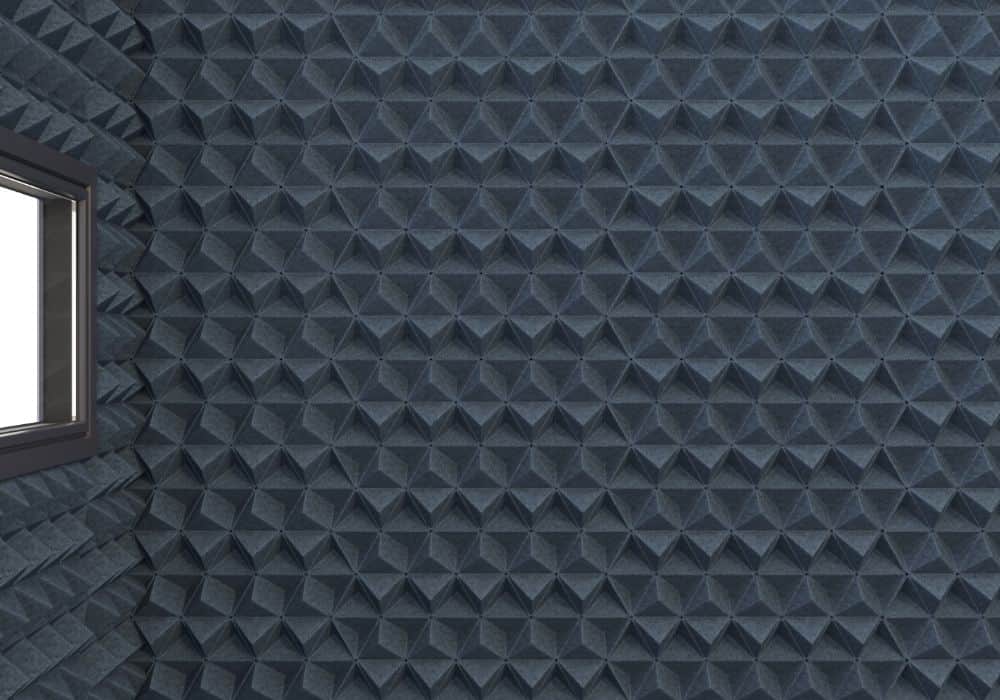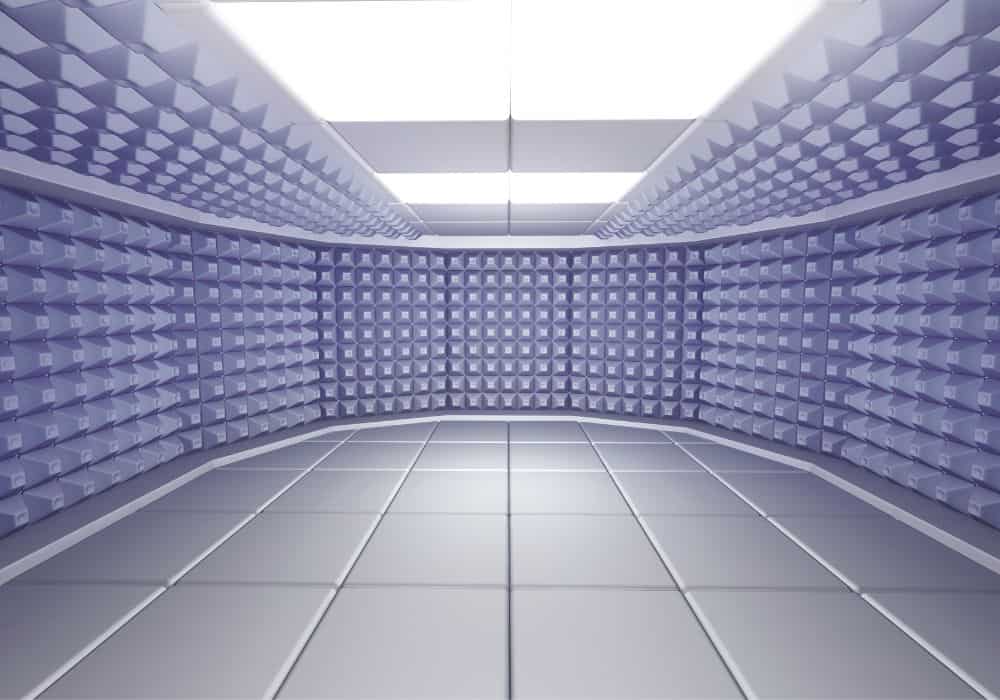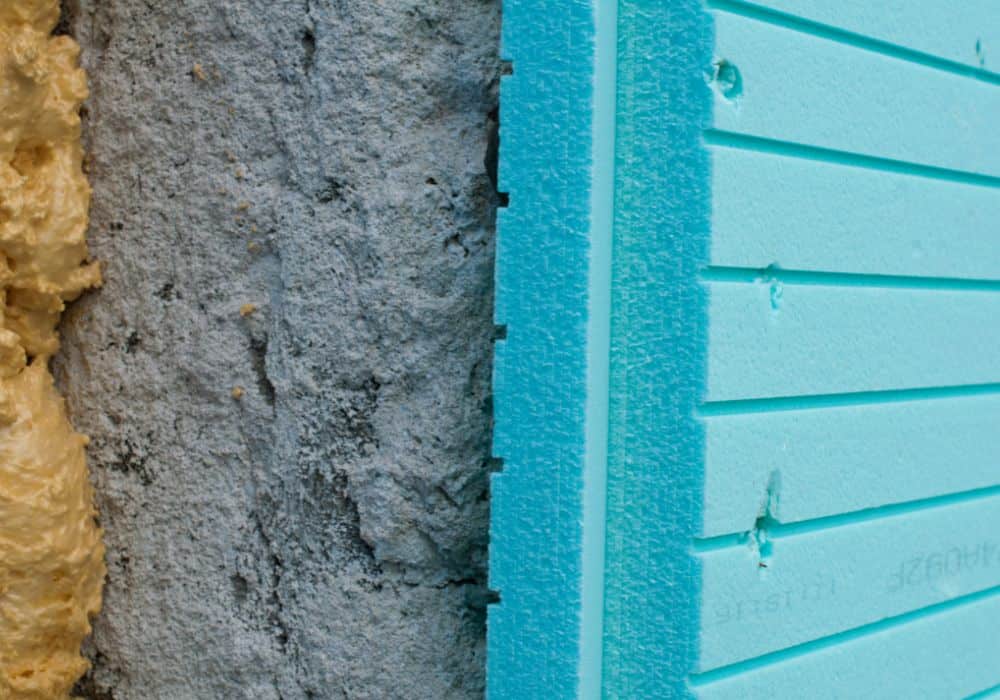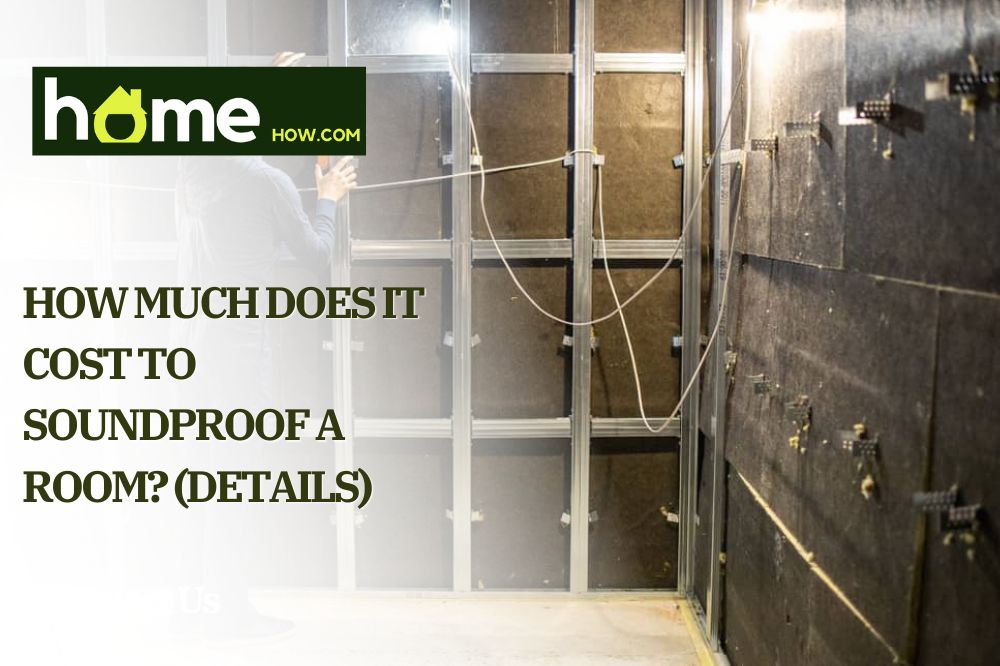Do you want to practice those loud drums without disturbing anyone? Or, perhaps, you’re the one who doesn’t want to get disturbed? In any case, soundproofing the room can do wonders!
Soundproofed rooms block the path of the soundwaves. They cannot travel from inside to outside and vice versa. Hence, improving noise control.
But how much does it cost to soundproof a room? The process isn’t cheap, with average costs varying between $$ to $$$+.
Without prior calculations, you can end up breaking the bank. So, in today’s post, we will equip you with all the necessary pricing information to make the best possible estimate. Let’s dive in!
Soundproofing Basics

Sound requires a medium to travel. As long as there are particles, the sound waves will keep moving around in all directions. This means a lot of uncontrollable noise.
Noise Category
Generally, you can classify it into two broad categories:
- Airborne Noise: The airborne noise travels mainly through the air particles. For example, when we speak, the sound produced by our mouth moves through the air until it reaches the other person.
- Impact Noise: The impact noise occurs when two surfaces collide or come in contact. An amazing example would be footsteps on the floor. When these two surfaces collide, the sound produced travels through the solid matter (floor) and creates a dull thud or loud thumping.
Both these noise types come from multiple sources. Kids, pets, neighborhood, and whatnot. If you wish to get rid of unwanted sources, it’s important to soundproof the room.
How Does Soundproofing Work?
Soundproofing is the process of blocking sound. When you soundproof a room, you’re making sure that the noises from outside don’t enter inside or the noises from inside don’t go outside. This can be done in three ways.
- By Adding Mass: This method requires adding mass to a structure until it’s dense enough to reflect the sound waves. Or the density causes the traveling soundwaves to convert into heat.
- By Decoupling: Decoupling means that the two parts of the structure (like the wall) are separated. This inhibits the transmission and prevents loud noises from traveling between places.
- By Sound Absorption: As the name suggests, this method involves the usage of sound-absorption materials. The material (like acoustic foam) would absorb the sounds, reducing the transmission.
The STC Standard
Sound Transmission Class refers to how well the building wall isolates the sound. At 45 STC, the walls began to isolate conversations and normal speech. It means that you can’t hear conversations across the room with soundproofing of 45 STC.
At 50 STC, loud sounds turn into muffled noises. The International Building Code demands a minimum of 50 STC for large-family homes or commercial buildings. Anything above this rating gives you excellent sound isolation and privacy, with 65 considered to be completely soundproofed.
Is It Possible to Completely Soundproof a Room?
Yes, you can completely soundproof a room. First, identify the source and its points of reflection. Then, use the appropriate soundproofing methods to ensure the maximum STC rating possible.
4 Main Factors That Affect Soundproofing Costs

Typically, the cost of soundproofing a room can vary from $300 to $5000. It’s a wide range that depends on certain factors. Let’s explore each one in detail!
1. Type of Project
Soundproofing a room that will be constructed costs less than an existing one. It’s because:
- Labor costs are integrated with the construction and design costs.
- Access to the soundproofing areas is easy. You don’t have to remove and reinstall anything.
- Sound absorbent features can be installed in one go, like double-layered glass windows. This saves the trouble of modifying an existing structure.
Other than this, the type of soundproofing method chosen and the time required to complete the project will significantly affect the prices. The sound absorption method costs the least, whereas adding mass costs the most.
Soundproofing companies may also charge more if the installation requires a specific permit in your area. To give an idea, here are the average costs per square foot:
|
Soundproofing a new room |
$12 to $25 |
|
Soundproofing an existing |
$10 to $30 |
2. Square Foot
A square foot is the standard measurement for room sizes. A 132-square feet room is considered to be medium, whereas 144+ square feet is large.
Generally, the larger your room is, the more complete soundproofing costs become. However, if you’re only soundproofing a few areas of the room, the costs might be less.
3. Type of Material
There is an assortment of soundproofing materials available in the market. Each one has a different profile and cost. Here are the most-preferred choices:
- Foam Insulation
- Mass-loaded Vinyl
- Acoustic Tiles & Panels
- Soundproof Paint
We’ve discussed the details of their use and cost in the later section.
4. DIY VS Professional Installation
When you hire a professional, you’re not only paying for the materials and process. But you’re also paying for their skills, efforts, and time. This could be a convenient yet expensive choice.
A soundproofing expert charges around $75 to $200/ hour. You may find cheap installing contractors between $50 to $150, though their service quality might not be great. If both of these seem out of budget, try doing it yourself.
However, know that soundproofing isn’t a piece of cake. You should have considerable understanding and prior knowledge to attempt.
Detailed Soundproofing Costs Breakdown

The total soundproofing cost of a room depends on what surfaces are present. Each surface will require a different soundproofing technique and so will have different costs. Below, we’ve discussed the common surfaces in detail.
1. Windows
- Curtains: The soundproof curtains are heavy and thick, with a porous surface to absorb sound waves. They are typically made from suede, polyester, and velvet. You can expect to pay anywhere from $15 to $100.
- Inserts: Inserts refer to custom-made window installations that help prevent noise from traveling through gaps. It costs $250 to $500, depending on the manufacturer, size, and aesthetics. Cheap, DIY alternatives to window inserts include caulk and weatherstrip taps. You can use them to seal the gaps.
- Soundproof Windows: The soundproof windows have thicker glass panels. They also have more distance between them to trap air and offer sound insulation. These are expensive, with prices ranging from $500 to $1500.
2. Doors
- Soundproof Paint: Also called acoustic paint, soundproof paint is a budget-friendly option that costs $2 to $4/square foot. You can paint the doors yourself using this. It’s just like regular paint in texture and color. However, the presence of viscoelastic compounds makes them capable of dampening vibrations and noises. It’s recommended to apply two coats for the best results.
- Door Sealant: The gaps between the door and the floor are the main culprit for the noise. Use a weatherstrip or sealant to fill in the gaps at the bottom of the door. It usually costs $40. Alternatively, you can get a soundproof threshold built for $30.
- Soundproof Door: Soundproof doors are a permanent and efficient solution. They come in two different types; solid-core and soundproof glass. The former is more durable and cheaper. A solid-core door will cost $500 to $1600 with installation. Meanwhile, a good soundproof glass door will start at $1300.
3. Walls & Ceilings
- Foam Insulation: Foam insulation is the cheapest option, with costs between $1 to $3/square foot. It has two types; injection foam and spray foam. The injection foam insulation is done by removing the panels, drilling holes, and then injecting the foam into the cavity. It’s best for internal walls and drywalls. Meanwhile, spray foam insulation is typically used for ceilings. Since both fill the cavities, foam insulation helps reduce the noise greatly. However, it alone is not enough to create a sound-deadening effect.
- Mass-loaded Vinyl (MLV): As the name suggests, mass-loaded vinyl is dense and tough. It blocks the sound waves from traveling across the walls and ceilings. The material is flexible yet durable, so you can even use it on the floor. The average cost is $3 to $5/square foot. Since it comes in long rolls, expect to pay around $100 to $200.
- Acoustic Panels: Acoustic foam panels are fabric-wrapped boards with the ability to absorb sounds. They specifically reduce echoes, reverberations, and background noise. These are available in different sizes and shapes to improve the aesthetics of the room. But, the material is expensive and can cost up to $5 or more per 4-inch panel.
- Drywall: Drywall is a regular construction material used in ceilings and walls. It has a solid gypsum core that helps muffle sounds. It will cost you around $15 for a 4×8-foot panel. That said, if you want to level up the soundproofing game, there’s a specialty variant available in the market. The soundproof drywall consists of viscoelastic and ceramics too. Hence, blocking the sound to a great extent. These special soundproofing layers of drywall cost $40 each. It may rise to $60, depending on the brand and quality.
4. Floors
- Carpet & Rug: The most convenient way to soundproof the floor is to use heavy carpets and mats. Their dense material and build have good sound absorption properties. Plus, you can get them for $4 – $11 per square foot!
- Underlayment: Underlayment refers to the layer beneath the flooring to offer heat and sound reduction. Some common choices include foam and rubber ($0.20 – $0.50 per square foot). However, specialty underlayments can cost more.
How Much Does It Cost to Soundproof a Room?
All in all, the cost of a soundproof room depends on the room size, complexity, material, surfaces, and whether the installation is done by professionals or you. Here are the cost ranges by room:
| Bedroom | $300 to $1500 |
| Gym | $300 to $1500 |
| Laundry Room | $420 to $3500 |
| Bathroom | $500 to $6300 |
| Garage | $650 to $3500 |
| Home Office | $1000 to $4500 |
| Kitchen | $1600 to $7200 |
| Home Theaters | $1000 to $10,000 |
| Basement | $5000 to $30,000 |
Final Words
To summarize, most people typically spend $1000 to $3000 on soundproofing. These costs vary with needs and individual room properties. So, don’t be scared by the figures and consider what your needs are to calculate the cost accordingly!
